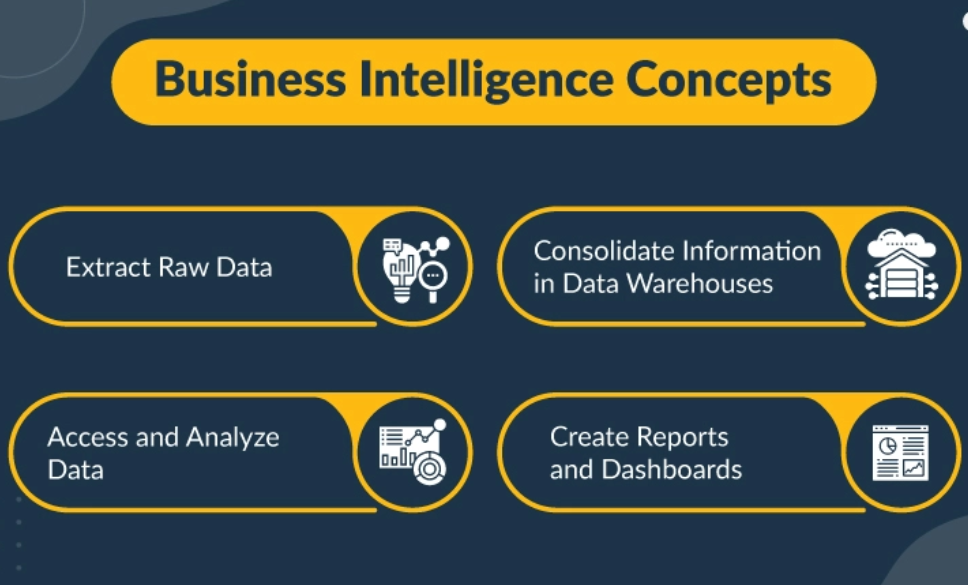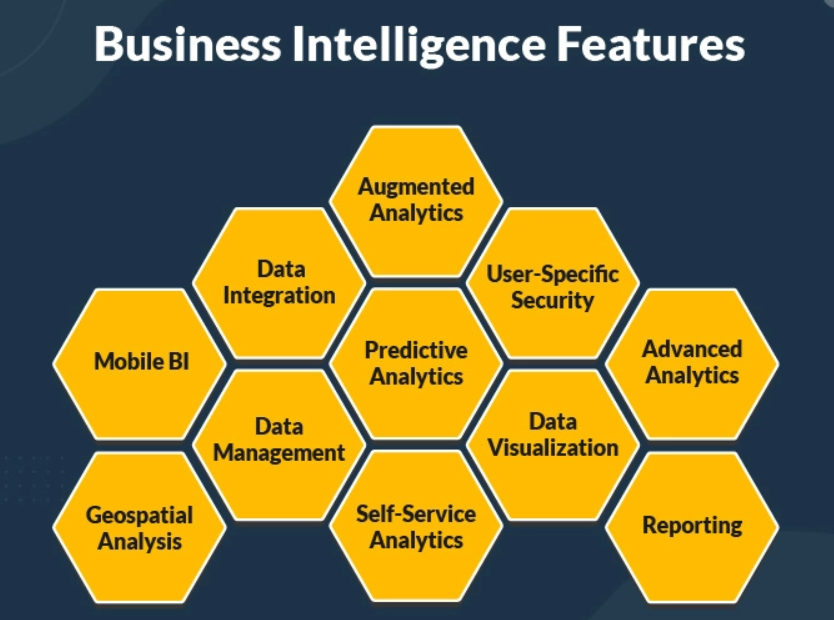Concept of Business Intelligence – Business Intelligence (BI) is an aspect or component within a company that is important to implement for maximum profit. Without the use of Business Intelligence, it will be difficult for companies to recognize or know their greatest profit potential.The following is the definition of Business Intelligence along with its benefits and examples!
What is Business Intelligence (BI)?
Quoting bbs.binus.ac.id, Business Intelligence is a set of analytical tools in the form of business information that is useful for consolidating, analyzing, storing, and accessing a lot of data in the context of business processes that lead to making decisions and actions with the aim of improving business or business performance.
Business Intelligence can make it easier for us to make the right decisions. Generally, Business Intelligence describes a concept and method on how we can improve the quality of decision making in a business based on data-based systems. The data is then converted into information which is analyzed and compiled in advance according to the context.
Benefits of Business Intelligence for Companies

There are 4 kinds of benefits of Business Intelligence according to Turban, Rainer and Potter quoted from the bbs.binus.ac.id site, namely:
- Increase the value of organizational data and information.
- Facilitate measurement of organizational performance.
- Increase investment value from existing information technology.
- Improve cost efficiency.
Skills a Business Intelligence Must Have
To become a reliable Business Intelligence, certain skills or abilities are required in order to be able to make the right business decisions and achieve business goals. Here are seven must-have skills as quoted from geeksforgeeks.com:
1. Data preparation
In order to derive any insight from the data, it needs to first be collected, cleaned, and organized in a uniform manner. There are many data preparation tools that are capable of collecting data from multiple sources and prepared with the same dimensions and measurements.
To get used to data preparation, you will need to be familiar with a number of tools such as Tableau Prep and Improvado. Alteryx.
2. Data Mining
Data mining is the process of finding patterns in data that were previously invisible. This capability turns raw data into useful information used for decision making.
Knowledge of data mining requires an understanding of various technologies such as machine learning, databases, statistical analysis, and computer science algorithms. Some of the tools that help data mining are Rapid Miner, Oracle data mining, and Konstanz Information Miner.
3. Statistical Analysis
You should have knowledge of various statistical components such as mean, median, range, variance and max. This can be used to get a more detailed view of the data.
Advanced statistical topics such as combinatorics, set theory, probability, discrete, continuous, and bivariate distributions need to be understood as well. There are many analytics tools that help businesses to understand their metrics better so as to create the right BI strategy, for example SAS, Hadoop, Spark, Hive, and Pig.
4. Descriptive Analysis
Descriptive analysis involves examining the data to understand if there are missing values, outliers, abnormal or skewed distributions, and so on. In essence, descriptive analysis is part of understanding and knowing the data before presenting data to decision makers in a clean form.
5. Data Visualization
As a BI analyst, an important part of your job is not only to spot patterns in data, but also to visualize data in such a way that those patterns are obvious. You should have knowledge of various charts that can be used to visualize data such as Area Charts, Bar Charts, Heat Maps, TreeMaps, Scatter Plots and Gantt Charts.
These charts allow decision makers to understand data more deeply by visualizing it and understanding slowly changing trends or places where critical changes have occurred.
6. Business Knowledge
You should also have good business knowledge. It’s important to know the business model of the company where you work and understand how to leverage data to get the maximum benefit for your business based on key performance indicators.
You must understand the company’s short and long term business goals so that you can help chart its future path with the help of data.
7. Data Reporting
Data Reporting or Communication skills are very important soft skills for a Business Intelligence analyst job. You need to have good conversational skills to report the insights gleaned from data to those higher up in the business, such as stakeholders and board members in order to make the necessary decisions for the business.
In addition, it is important to remember that most decision makers probably come from a technical background so it is important to use layman’s language in explaining technical concepts so that they are easy to understand.
Example of Business Intelligence
An example of Business Intelligence can be seen in a global car business that wants to analyze their car sales in each country and understand which model is performing better. They can use Business Intelligence to gather data about all the car models they own such as worldwide sales, level of popularity among customers, and suggestions for improvements.
By analyzing this data, businesses can understand which model is more popular in each country and how to make improvements to increase their profits.
That is the concept of Business Intelligence (BI) that applies in the business world, namely a set of business information analysis tools that direct companies to make the right decisions and actions. To become a reliable Business Intelligence analyst, a number of skills are needed such as data mining, data visualization, business knowledge, and proper communication.
How does the business intelligence process work?

A business intelligence architecture includes more than just BI software. Business intelligence data is typically stored in a data warehouse built for an entire organization or in smaller data marts that hold subsets of business information for individual departments and business units, often with ties to an enterprise data warehouse.
In addition, data lakes based on Hadoop clusters or other big data systems are increasingly used as repositories or landing pads for BI and analytics data, especially for log files, sensor data, text and other types of unstructured or semi structured data.
BI data can include historical information and real-time data gathered from source systems as it’s generated, enabling BI tools to support both strategic and tactical decision-making processes. Before it’s used in BI applications, raw data from different source systems generally must be integrated, consolidated and cleansed using data integration and data quality management tools to ensure that BI teams and business users are analyzing accurate and consistent information.
From there, the steps in the BI process include the following:
- data preparation, in which data sets are organized and modeled for analysis;
- analytical querying of the prepared data;
- distribution of key performance indicators (KPIs) and other findings to business users; and
- use of the information to help influence and drive business decisions.
Initially, BI tools were primarily used by BI and IT professionals who ran queries and produced dashboards and reports for business users. Increasingly, however, business analysts, executives and workers are using business intelligence platforms themselves,
thanks to the development of self-service BI and data discovery tools. Self-service business intelligence environments enable business users to query BI data, create data visualizations and design dashboards on their own.
BI programs often incorporate forms of advanced analytics, such as data mining, predictive analytics, text mining, statistical analysis and big data analytics.
A common example is predictive modeling that enables what-if analysis of different business scenarios. In most cases, though, advanced analytics projects are conducted by separate teams of data scientists, statisticians, predictive modelers and other skilled analytics professionals, while BI teams oversee more straightforward querying and analysis of business data.
Why business intelligence is important
Overall, the role of business intelligence is to improve an organization’s business operations through the use of relevant data. Companies that effectively employ BI tools and techniques can translate their collected data into valuable insights about their business processes and strategies.
Such insights can then be used to make better business decisions that increase productivity and revenue, leading to accelerated business growth and higher profits.
Without BI, organizations can’t readily take advantage of data-driven decision-making. Instead, executives and workers are primarily left to base important business decisions on other factors, such as accumulated knowledge, previous experiences, intuition and gut feelings.
While those methods can result in good decisions, they’re also fraught with the potential for errors and missteps because of the lack of data underpinning them.
Also Read: